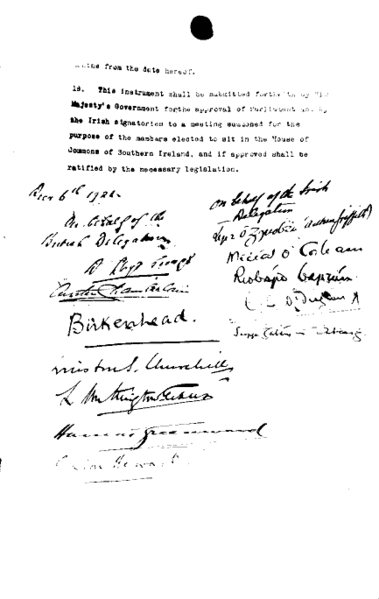Anglo-Irish Treaty
At the end of November, the British presented the Irish delegates with a draft treaty.
This compromise was brought back to Dublin to be discussed by the full cabinet. The delegates insisted that the terms written out in the draft treaty were the best terms available, and that they must recognise the King in Ireland or risk the war starting again.
The cabinet rejected the draft treaty, and Arthur Griffith agreed that no agreement would be reached in London without the prior approval of the cabinet in Dublin.
The delegates returned to London for two days of lengthy discussions, and without the approval of the Dublin cabinet the delegates signed the Anglo-Irish Treaty on the 6th December 1921 rather than face a renewed war.
The treaty led to:
Ireland becoming a dominion with King George V as Head of State, and the new Irish Free State would become part of the British Commonwealth.
The consolidation of the Government of Ireland Act that confirmed the partition of Ireland, with six predominantly unionist counties in the north remaining outside the Free State.
The Dáil would take an Oath of Faithfulness to the King and abandon the Irish republic that the Irish Republican Army (IRA) had fought for.
The Royal Navy would keep three ports in Southern Ireland for strategic purposes.


